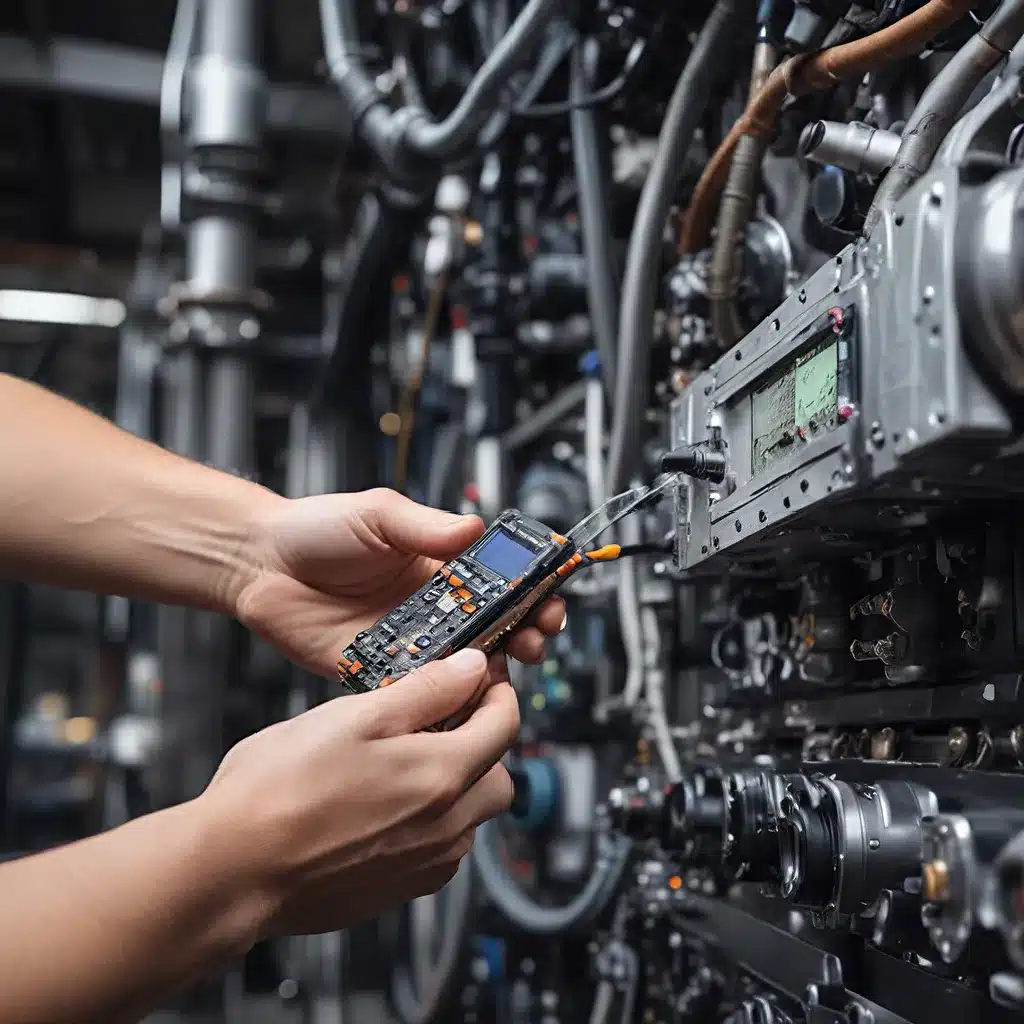
The Rise of Sensor Networks and Predictive Maintenance
In today’s fast-paced, technology-driven world, the ability to monitor and maintain critical assets has become increasingly crucial for businesses across various industries. Sensor networks and the Internet of Things (IoT) have revolutionized the way we approach asset management, enabling real-time data collection and advanced analytics to predict and prevent equipment failures.
One of the most significant advancements in this field is the rise of predictive maintenance, a proactive approach that leverages sensor data and machine learning to optimize asset performance and lifespan. Unlike traditional reactive or preventive maintenance strategies, predictive maintenance empowers organizations to make data-driven decisions, reduce unplanned downtime, and improve overall operational efficiency.
Predictive maintenance builds on condition-based monitoring, where sensors continuously assess the health of equipment and provide insights into its current state. By applying advanced analytical tools and machine learning algorithms to this data, predictive maintenance solutions can identify potential issues, detect anomalies, and forecast future equipment failures.
Optimizing Asset Lifecycle and Performance
At the heart of predictive maintenance lies the goal of optimizing asset lifecycle and performance. By leveraging sensor-driven insights, organizations can make more informed decisions about maintenance schedules, spare parts inventory, and capital replacement planning.
IBM Maximo, a leading enterprise asset management (EAM) platform, offers capabilities that enable predictive maintenance strategies. Through its health scoring methodologies and customizable dashboards, Maximo provides a consolidated view of asset health, empowering reliability engineers and maintenance managers to make data-driven decisions.
One of the key benefits of predictive maintenance is its ability to reduce time to make capital replacement decisions. By analyzing historical data and current asset performance, predictive maintenance solutions can accurately forecast the remaining useful life of equipment, helping organizations plan for upgrades and replacements more effectively.
Moreover, predictive maintenance can enhance replacement planning by providing a clearer understanding of asset health. With this visibility, organizations can make more informed decisions about which assets require attention and optimize maintenance schedules accordingly, leading to improved reliability and reduced operational costs.
Leveraging IoT and Advanced Analytics
The success of predictive maintenance hinges on the integration of IoT and advanced analytics. Connected sensors gather data from various assets, such as machinery, equipment, and infrastructure, capturing real-time information about their performance and condition.
This data is then collected and analyzed using AI and machine learning algorithms, which identify patterns, detect anomalies, and predict potential failures. By correlating asset data with environmental factors, maintenance history, and other relevant information, predictive maintenance solutions can provide a comprehensive understanding of asset health and guide maintenance decisions.
Condition monitoring techniques such as sound, ultrasonic, acoustics, temperature, thermal, lubrication, oil, and vibration analysis play a crucial role in predictive maintenance. These techniques can identify early signs of potential issues, enabling maintenance teams to address problems before they escalate into costly failures.
Improving Reliability and Sustainability
The benefits of a predictive maintenance strategy extend beyond just cost savings and operational efficiency. By anticipating equipment faults and failures, predictive maintenance can also contribute to improved reliability and sustainability.
Deloitte reported that predictive maintenance can result in a 5-15% reduction in facility downtime and a 5-20% increase in labor productivity. This translates to fewer breakdowns, reduced planned maintenance or unplanned downtime, and enhanced lifetime reliability and durability of equipment.
Moreover, predictive maintenance can have a positive impact on operational sustainability. By optimizing asset performance and uptime, organizations can minimize energy usage and waste, reducing their environmental footprint. The ability to accurately forecast future operations also helps businesses better manage their spare parts inventory and labor costs, contributing to a more sustainable and resilient supply chain.
Overcoming Challenges and Driving Adoption
While the benefits of predictive maintenance are compelling, there are also challenges that organizations must navigate when implementing such strategies. Assessing the criticality and cost of failure for individual assets requires time and resources, and low-cost assets with readily available parts may be better served by other maintenance approaches.
Additionally, the initial investment required for predictive maintenance technologies can be a barrier, especially for smaller organizations. However, the competitive and financial advantages of a well-executed predictive maintenance program are significant, and the long-term cost savings often outweigh the upfront investments.
Despite these challenges, the adoption of predictive maintenance is on the rise, driven by technological advancements in IoT, big data, and machine learning, as well as the increasing need for operational resilience in the face of global disruptions and unpredictable events.
Industries such as Energy, Manufacturing, Telecommunications, and Transportation, where unplanned equipment failures can have widespread consequences, are leading the charge in adopting predictive maintenance technologies. By leveraging sensor-driven insights and advanced analytics, these organizations can improve equipment reliability, enhance labor force productivity, and mitigate safety and environmental risks.
The Future of Sensor-Driven Predictive Maintenance
As the sensor networks and IoT landscapes continue to evolve, the future of predictive maintenance holds immense promise. Advancements in edge computing, 5G connectivity, and edge-to-cloud integration will further enhance the capabilities of predictive maintenance solutions, enabling real-time data processing, improved decision-making, and more efficient maintenance workflows.
Moreover, the integration of emerging technologies like digital twins, augmented reality, and natural language processing will revolutionize the way maintenance teams interact with and make sense of asset data, streamlining their decision-making processes and enhancing the overall effectiveness of predictive maintenance strategies.
By embracing the power of sensor-driven predictive maintenance, organizations across various industries can unlock a new era of asset optimization, operational resilience, and sustainable growth. As the sensor networks and IoT ecosystem continues to advance, the future of asset management lies in the fusion of cutting-edge technologies, data-driven insights, and a proactive, predictive approach to maintenance.